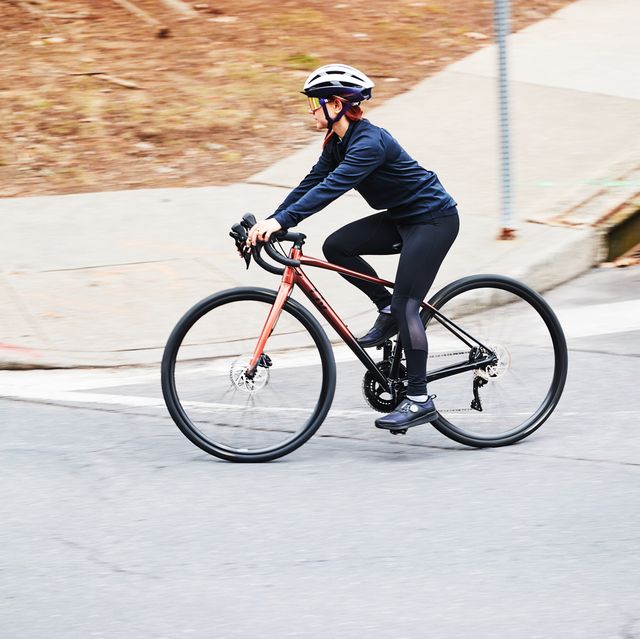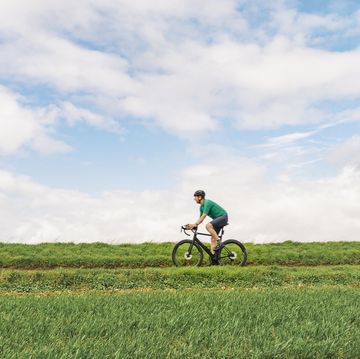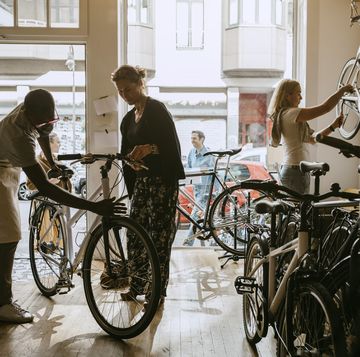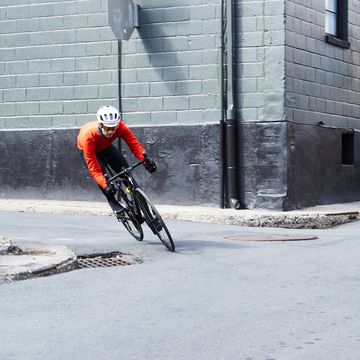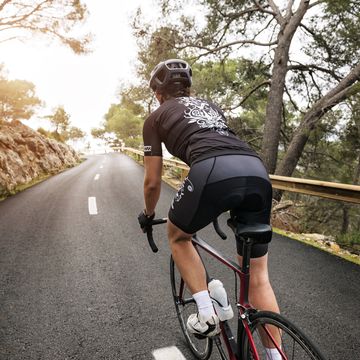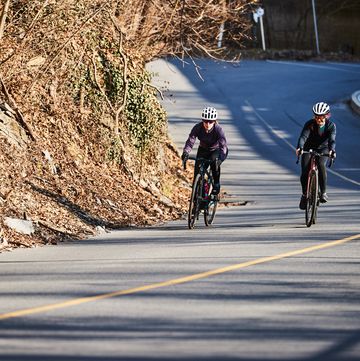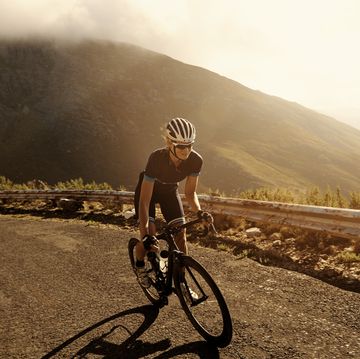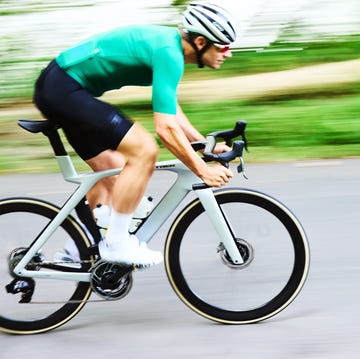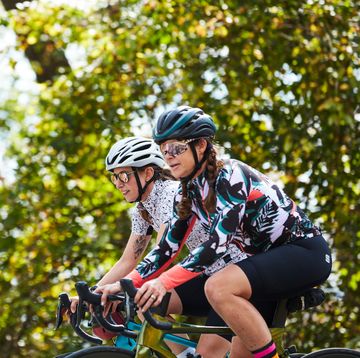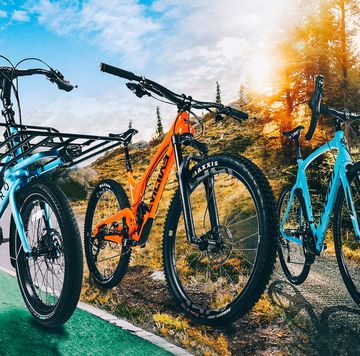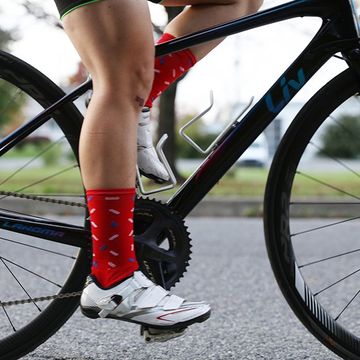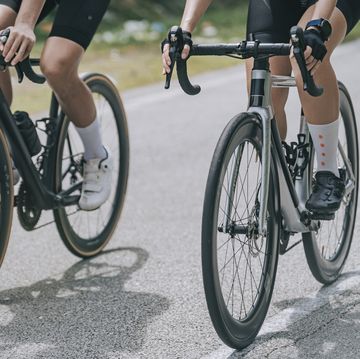Now that you have your bike and logged a few miles on it, you might wonder what next steps to take to keep riding strong, set and hit new goals, and keep your riding habit going strong. Thankfully, we have you covered with cycling tips and tricks to dial in your ride and build your confidence.
While there are so many amazing adventures in store for you, we also understand that cycling can feel overwhelming at first. On top of knowing the basic rules of the road, it can seem like there’s a whole set of unwritten rules out there as well. Can you wear low socks? Do your water bottles need to match? Can you join any group ride?
For starters, don’t worry about the “rules” and focus more on having fun. These beginner cycling tips will help you do just that.
1. Set Your Seat Height Right
Are you experiencing pain in the front of your knee, or do you feel like your pedaling is underpowered? Your seat might be too low, causing you to under-extend during your pedal stroke. This is a common mistake among beginners because most people feel more comfortable and confident if their feet can reach the ground. But having the wrong saddle height could put you at risk for injury.
At the right seat height, your knee should be slightly bent at the bottom of your pedal stroke, without rocking your pelvis. Measure the distance between the bottom bracket and the top of the seat. This is your seat height. It should be very close to the product of your inseam (in centimeters) multiplied by 0.883.
If you need help, roll down to your local bike shop. The staff should be happy to set you up with the best saddle height for you. Then, get comfortable lifting yourself off the saddle and straddling the top tube so your feet can touch the ground as you come to a stop. It helps to lean the handlebars toward the foot you want to place down.
2. Get a Bike Fit
How your bike fits you is one of the most important aspects of riding. If the fit is painful, you’re not going to spend much time in the saddle, no matter how excited you are to ride that new bike.
To get the right fit, two elements are key: seat height and reach. The seat height should be high enough to give you a very slight bend in your knee when your foot is at the bottom of the pedal stroke, as mentioned above. Proper reach means your arms and torso make a 45-degree angle over the bike. Too long, and your back will be sore reaching for the handlebar; too short, and your knees will be too close to your arms.
When you’re shopping for a bike, take it for a test ride to make sure its frame size is right for you. Then, get a full professional bike fit at your local bike shop to dial in the perfect seat height, reach, and more.
3. Don’t Stress About Gear
You don’t need fancy clothes, clipless cycling shoes (which, despite the name, actually clip into the pedals), or a top-of-the-line bike to become a cyclist. Sure, slick equipment can be a lot of fun, but there’s nothing like smoking a bunch of high-end carbon bikes on a climb when you’re riding an old beater.
The important thing is that you just get out there and ride—and worry about any potential gear upgrades later. You’ll certainly need a few things to get started (a bike and a helmet, of course), but don’t stress about dumping a bunch of money into a lot of fancy new gear.
4. Get to Know Basic Maintenance
You don’t have to be a pro wrench to take care of the basics. Routine maintenance—like lubing your chain—will not only save you a bundle at the bike shop, but it will also prolong the life of your bike and its components.
Keeping the recommended amount of air in your tires (look over your tire to find the psi range) makes your rides a lot easier, too, and prolongs the life of your tires.
Check out these other easy bike repairs and maintenance tasks you can do on your own.
5. Avoid Doing Too Much Too Soon
One of the biggest sources of injury comes from trying to take on too much mileage before you’re ready. Build up slowly, ease in, and give your body time to adjust to longer distances.
Similarly, if you’re on a training ride, don’t start too fast and risk burnout and fatigue in the second half. Warm up during the first third of the ride, then settle into a rhythm for the second, and give it everything you’ve got for the final third.
6. Carry a Flat-Fixing Kit
One minute you’re out there on the trail, cruising along with the perfect tailwind and having the time of your life, then that unmistakable sound of air hissing out of your tires shatters your peaceful reverie, and the party is over.
If your flat tire backup plan is to phone a friend, take a few minutes and check out this guide to changing a tube or patching one. You won’t believe how much more independent you’ll feel with the proper bike tire repair kit on hand—a spare tube, a patch kit, tire levers, and a mini-pump—and the know-how to get yourself back on the road in 15 minutes.
7. Use Your Gears
Gears are your best friends on a climb and your greatest source of speed on a long, rolling stretch of road. But it does take a little practice to get the hang of when and how to shift into your most efficient gear.
8. Learn to Ride in a Group
Group rides have their own protocol and etiquette for a reason—it’s easy to cause a crash if your riding isn’t predictable. If it’s your first time riding with a new group, hang out in the back, observe, and ask for help if you need it. No question is a dumb question when your own safety and the safety of the group is at stake.
9. Remember to Refuel
If you’re only riding for an hour, you should have water but don’t really need to eat on the bike. If you’re planning to ride for two hours or more, bring a snack along and start eating 45 minutes to an hour into your ride. Continue to eat small amounts every 15 to 20 minutes or so.
Forgetting to refuel can put your body into a deficit and cause you to bonk—or go into a hypoglycemic state: tiredness, irritability, dizziness, nausea, confusion, which is not a strong way to finish a ride.
